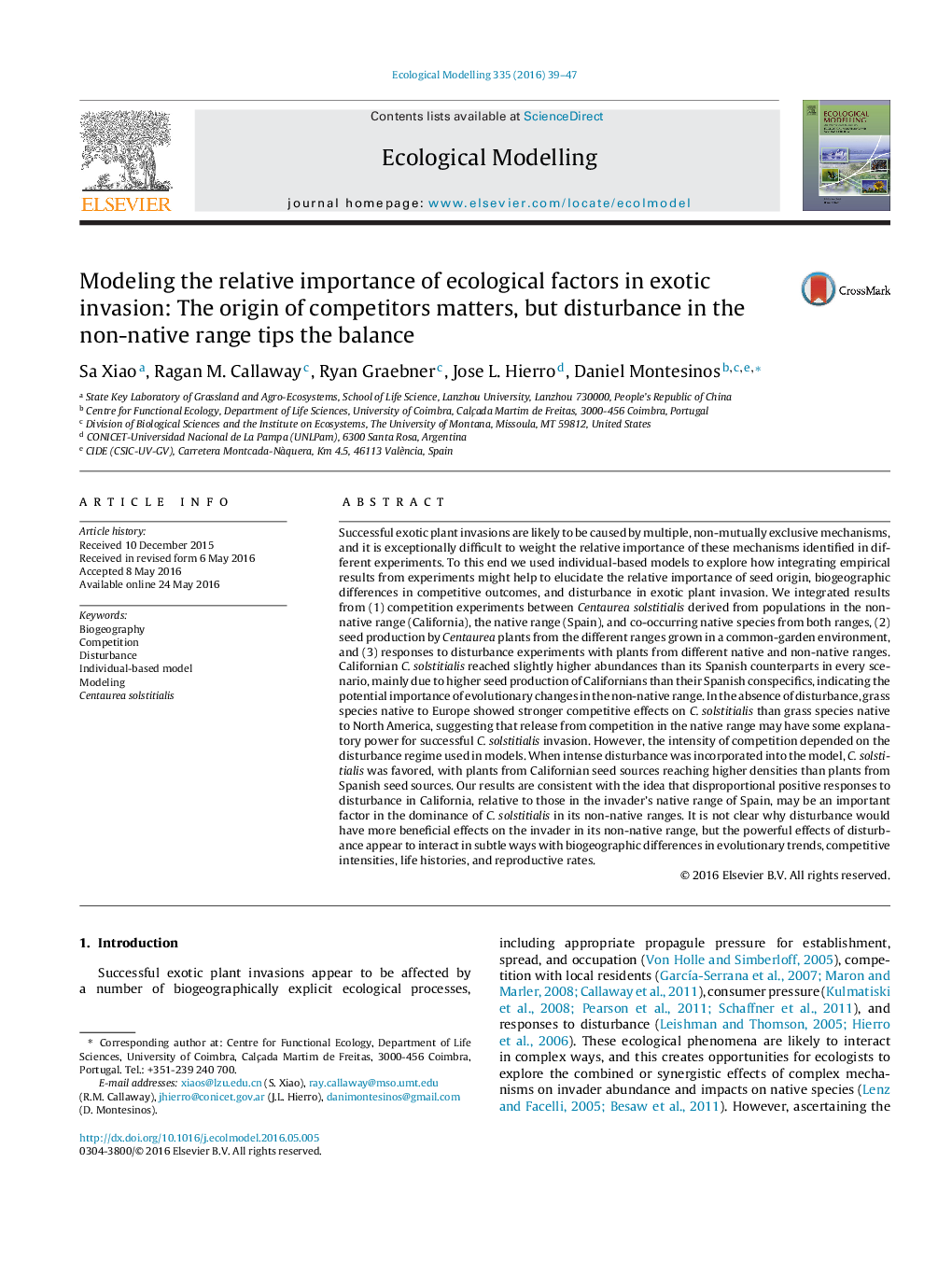| Article ID | Journal | Published Year | Pages | File Type |
|---|---|---|---|---|
| 4375538 | Ecological Modelling | 2016 | 9 Pages |
•Evaluation of the relative importance of different mechanisms involved in invasions.•Plants from populations in the non-native range performed better in most scenarios.•Greater reproductive capacity of non-native C. solstitialis favored invasion.•Disturbance favored C. solstitialis, predominantly in the non-native region.•Biogeographic differences were not manifest without disturbance.
Successful exotic plant invasions are likely to be caused by multiple, non-mutually exclusive mechanisms, and it is exceptionally difficult to weight the relative importance of these mechanisms identified in different experiments. To this end we used individual-based models to explore how integrating empirical results from experiments might help to elucidate the relative importance of seed origin, biogeographic differences in competitive outcomes, and disturbance in exotic plant invasion. We integrated results from (1) competition experiments between Centaurea solstitialis derived from populations in the non-native range (California), the native range (Spain), and co-occurring native species from both ranges, (2) seed production by Centaurea plants from the different ranges grown in a common-garden environment, and (3) responses to disturbance experiments with plants from different native and non-native ranges. Californian C. solstitialis reached slightly higher abundances than its Spanish counterparts in every scenario, mainly due to higher seed production of Californians than their Spanish conspecifics, indicating the potential importance of evolutionary changes in the non-native range. In the absence of disturbance, grass species native to Europe showed stronger competitive effects on C. solstitialis than grass species native to North America, suggesting that release from competition in the native range may have some explanatory power for successful C. solstitialis invasion. However, the intensity of competition depended on the disturbance regime used in models. When intense disturbance was incorporated into the model, C. solstitialis was favored, with plants from Californian seed sources reaching higher densities than plants from Spanish seed sources. Our results are consistent with the idea that disproportional positive responses to disturbance in California, relative to those in the invader's native range of Spain, may be an important factor in the dominance of C. solstitialis in its non-native ranges. It is not clear why disturbance would have more beneficial effects on the invader in its non-native range, but the powerful effects of disturbance appear to interact in subtle ways with biogeographic differences in evolutionary trends, competitive intensities, life histories, and reproductive rates.
